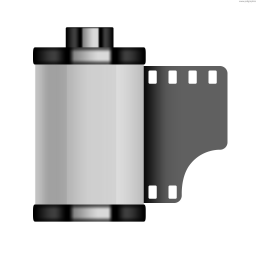

We use Tailscale to share between accounts.
But for large transfers I use an encrypted HDD.


We use Tailscale to share between accounts.
But for large transfers I use an encrypted HDD.


I can’t wait for an RTX 9070 to replace my RX 9070 XT!
Just like how the Z890 chipset from Intel is not the same generation as the X870 chipset from AMD.


I selfhost immich in a netcup VPS. They have a 2tb VM for about 22 euros a month via a black Friday sale
I’m on a 1tb arm plan for about 10 euros a month.


It seems like smores to me ¯_(ツ)_/¯


All the mom and pop restaurants I grew up with that have since closed.
Also knowing all the short cuts it took through the neighbor’s yards to get home.
Developing black and white film is really cheap and easy. I think it’s just developer, fixer, and an all in one film developer container.
Color film is a little more intimidating for me since it’s easier to over or under develop.


Definitely not wrong. Maybe I should put in that any method that can get consistent scans first is best?


Thank you. I definitely need to work on formatting because right now it looks like. Word vomit.
I use the Hedeco Lime II. It can display using EV so I can set exposure up quickly with my 500CM.
I wouldn’t say it’s gotten too expensive. I’m averaging about 2ish euros a photo with my medium format camera.
Each roll depending on the maker is 10-15 euros with 5 euro development fee. The most I’ve ever paid was 20 euros per roll.
If film ever runs out and I still don’t want to give up analog photography, I’ll use glass plates.
I think film is a bit too hard to do yourself. Case in point is Harmon Phoenix. You should take a look at their process because they are the 3rd maker of film emulation in the modern era.
I’m on pixelfed! It’s mostly film with some digital.
https://portfolio.pixelfed.de/randombullet
If the portfolio link doesn’t work here’s the direct link to my profile.
I’ve become a spray and pray type of photo with digital so I am using film to make me really slow down and focus on the basics.
The other half is the joy of knowing the photons physically affected the emulation layer. I really like how analog is a physical process. Also my folks are getting old, I like the idea of their photons affects a physical medium I can keep.
Do you develop film and sacn by yourself?
I send my film to a lab to get developed but I scan my film via a mirror less camera
Also color or b&w?
99% I shoot color film
Do you ever use movie film without soot?
I’ve shot a few of rerolled 250D, 500T and 800T. All without remjet.
What film do you use?
Favorite film is Kodak Gold 200 and Cinestill 800T. I have a soft spot for Ektar 100 especially if I want poppy colors.


Something like SGOV until I figure out what to do with it.
3-4% APY sitting around is nice.
It doesn’t take my duck.com alias
I have short sleep cycles. So I sleep at 0100 and wake up at 0600.
She needs like 12 hours of sleep.
I also do improv travel. Hop on the train to get some photos. But if she’s here I feel like dragging her around if I want to get out
Eh for anything under 5 ft I buy premade. My time is not worth making cables that short.
Any longer runs I crimp myself
I used to have a 5700G system that I had to switch out to a 14600k system due to quciksync pass through.
I got my 14600K down to 55w from 75w with everything else being equal. Insane how efficient some setups can be.
My 16tb Pi sips at 13w max or 8w idle. But no encoding or enough storage for normal work. So it’s warm storage